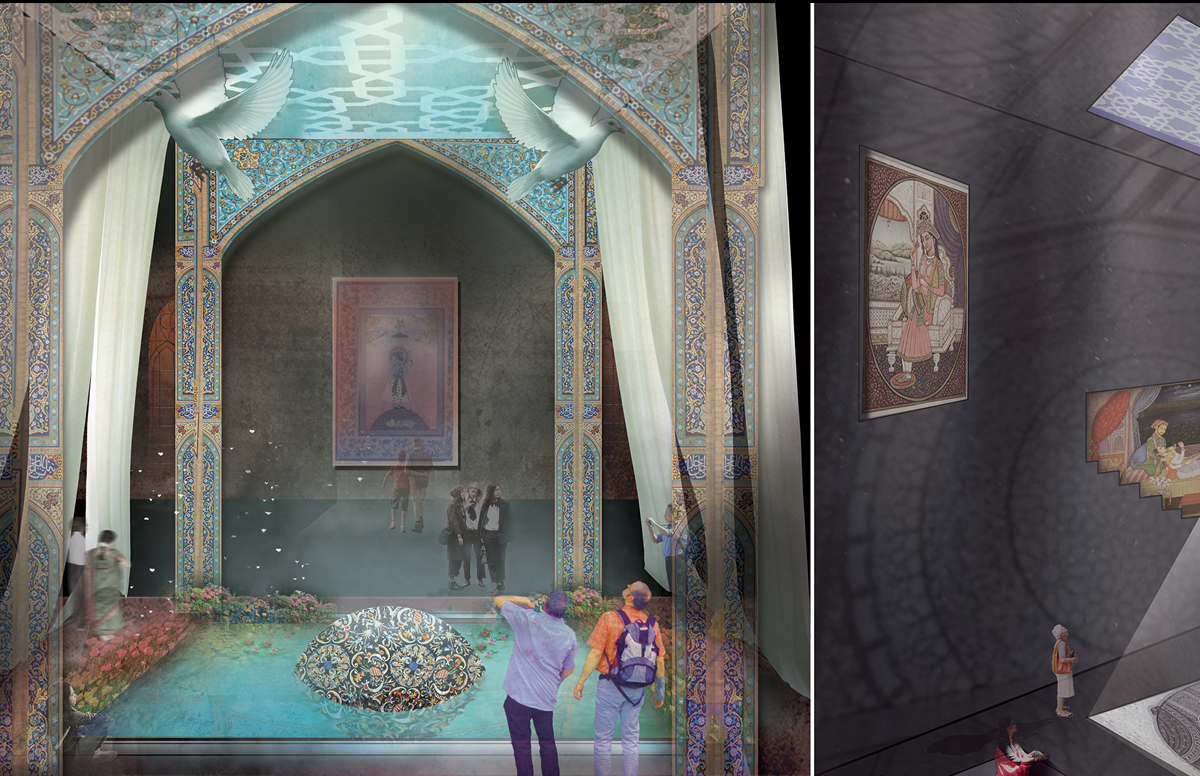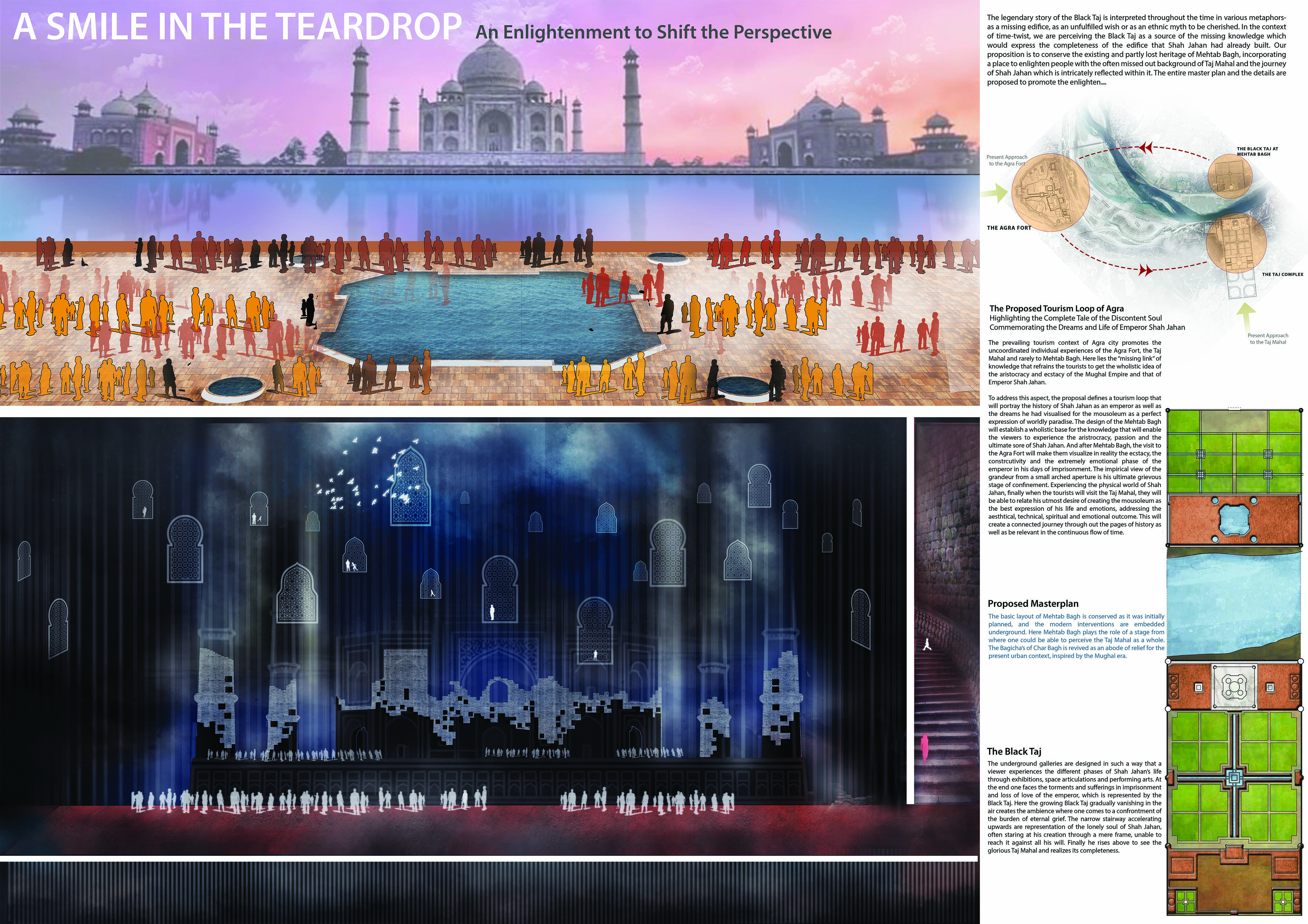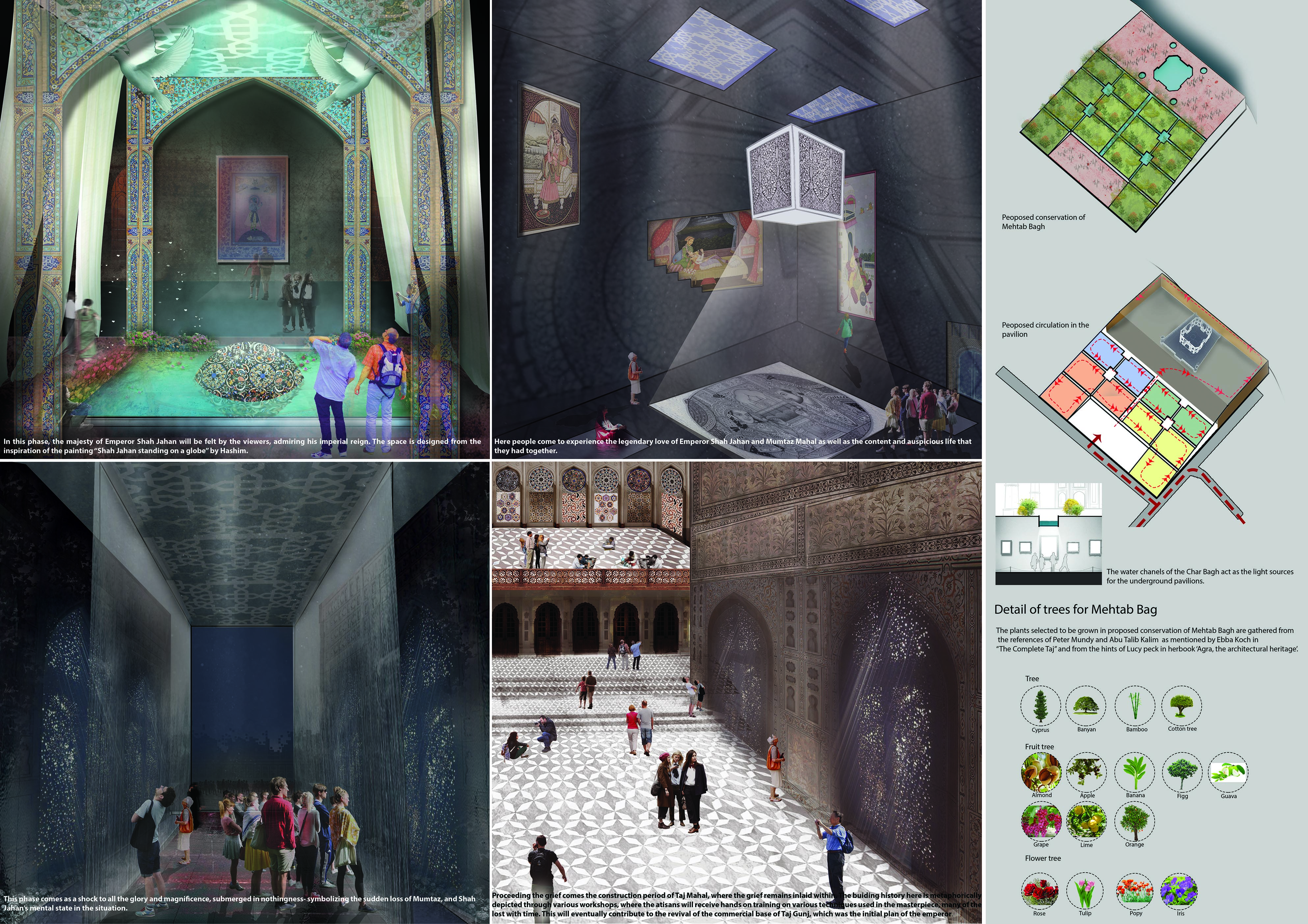
A Smile in the Teardrop An Enlightenment to Shift the Perspective
This proposal is a light of knowledge that connects all the missing links to express the Taj Mahal as a holistic masterpiece in itself. In this journey, the Black Taj is interpreted as a record of the captive soul tormented by the grief of the unexpected loss.
The legendary story of the Black Taj is interpreted throughout the time in various metaphors- as a missing edifice, as an unfulfilled wish or as an ethnic myth to be cherished. In the context of time-twist, we are perceiving the Black Taj as a source of the missing knowledge which would express the completeness of the edifice that Shah Jahan had already built. Our proposition is to conserve the existing and partly lost heritage of Mehtab Bagh, incorporating a place to enlighten people with the often missed out background of Taj Mahal and the journey of Shah Jahan which is intricately reflected within it. The entire master plan and the details are proposed to promote the enlightenment.
In present context, we find, there is a need for a wholistic appreciation of the Taj Mahal to perceive its completeness. Moreover, the deteriorating heritage of Agra needs to be uplifted to create a platform to enrich the living history and merge its fragmented pieces.
The need for educating the general mass with the complete background of the Taj Mahal is one of the prime issues addressed in the proposal. Again the deterioration of Agra including Mehtab Bagh is accelerated by the lack of proper conservation. Our proposal addresses this issue through development of the heritage according to present need, celebrating the glorious past at the same time.
The prime factor in this proposition was to interpret the conventional idea of the Black Taj in present context. From literary references it is evident that the Black Taj is an ethnic idea which does not have a very legit reference. As mentioned by Ebba Koch, “There is no other historical evidence to support this claim, and we also have to keep in mind that, in the Mughal tradition, an emperor never built his own tomb, but the successor built the tomb of his predecessor, his father. The legend of the Black Taj led, a few years back, to excavations of the ASI in the Mehtab Bagh. They showed that there are no foundations of a large building, in the center is a platform with a tank. It is quite possible that the Mehtab Bagh was then conceived as a place to view the Taj, as E. Moynihan has suggested.” [Source: Narayani Gupta, Ira Pande, "A Conversation with Ebba Koch", India International Centre Quarterly (Autumn 2007), pp. 138-150.] But in spite of the lack of rationality of the assumed legend, the ethnic importance of the idea of the Black Taj cannot be ignored. To address this issue, we are portraying the Black Taj as a reflection of the mighty Taj Mahal symbolizing the eternal grief of the Emperor which was persistent throughout all the ups and downs of the empire after the demise of his beloved wife, Mumtaz Mahal. Here Mehtab Bagh is retained as the place from where the enigma of the Taj could be experienced, as Shah Jahan had visualized.
In order to achieve the missing knowledge that ignites the question of incompleteness of the Taj, we approached with a journey which will cast the life of the Emperor and his emotions in different phases before they have a glance of the mighty edifice. This will change the perspective at which people look at it at present- as a mere symbol of love between the royals whereas it stands for a lot more than that. The Taj was in fact a symbolic reflection of the Emperor himself; his power, spirituality, ambition, inclination for perfection, efficient administration enwrapped by the loving soul, immersed in the tragic loss.
The Taj Mahal is an ultimate expression of the Emperor Shah Jahan and the Black Taj completes this perception. When a viewer leads through the whole journey of his glorified life and successful reign as well as the dark spots of torment at the loss of love and finally rises above to encounter the masterpiece, he comes to realize that the Taj Mahal stands for the every bit of it. The soul of Shah Jahan is woven in every piece of marble laid embracing Mumtaz in its heart, and no other place could better rest their souls in such a heavenly manner. And thus as Rabindranath Tagore says, it is a teardrop on the cheek of time. And this proposal casts light upon the smile behind it, the smile of accomplishment, the smile of a successful translation of a poetic dream.
Team:
Pankaj Nath Joy (Team Leader)
Tanzim Rachana
Sumaiya Sharmin Shemonty
Shehran Parvez Seyan

